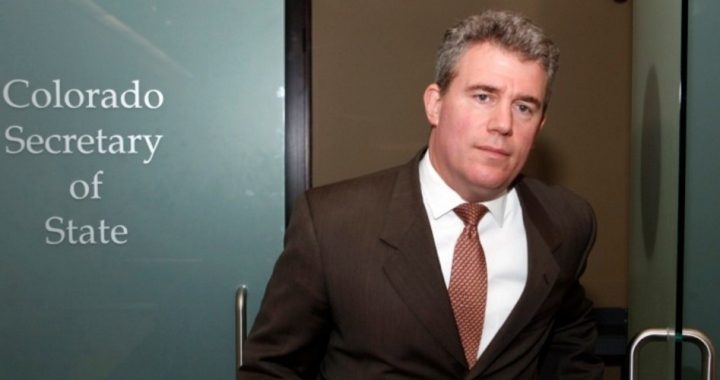
Another 300 suspected non-citizens are on Colorado’s voter rolls, Secretary of State Scott Gessler disclosed Tuesday in what has contributed to a heated national debate over voter fraud and so-called “voter suppression.” Gessler’s figures stem from the roughly 3,900 people who were sent letters in August which inquired about their citizenship status. This new 300-person group has been added to a list of another 141 people who were identified as possible non-citizens based on federal immigration data.
Democratic critics have railed against Gessler, who is a Republican, for acting on political motives by enacting checks that could potentially disenfranchise legal minority voters. This latest data mean that out of the 3,900 who received letters, 441 are suspected of being non-citizens, according to the federal immigration database, which is normally used to determine the status of legal immigrants who collect government benefits.
Gessler’s staff affirmed that they have mailed letters to suspected ineligible voters, notifying them of the findings so the recipients can either validate their citizenship or remove themselves from the voter rolls. “It’s unacceptable to have ineligible voters casting ballots in our elections,” Gessler declared, adding, “We want to ensure the most accurate reliable elections possible. Though the timing is not ideal, I felt it was important to alert these voters that the federal government says they’re not citizens.”
Some battleground states, such as Florida and Colorado, have received permission from the federal government to use the U.S. immigration database to determine voter eligibility. Meanwhile, Gessler and other Republicans have met contentious opposition from Democrats and liberal advocacy groups, who are questioning their political motives and accusing them of suppressing the minority vote.
“It’s suspiciously close to the election for someone who has been so partisan for this kind of behavior,” asserted Ellen Dumm, a Colorado-based consultant working for voter rights. Dumm contends that Gessler and his office should hone in on more critical issues, such as accommodating clerks on election issues and verifying that the Secretary of State’s website is functioning properly for voter registration.
Some critics, such as Rep. Charles Gonzalez (D-Texas), have actually claimed that voter fraud “doesn’t exist,” and that it’s simply a Republican agenda to intimidate largely Democratic voters:
While I challenged Mr. Gessler’s claims last year, it’s important that we pay particular attention to what has just happened. Once again, loudly trumpeted claims of evidence of voter fraud have proven to be baseless. Obvious flaws, like those I pointed out at the time, are ignored, and innocent people are blamed for the clerical errors of others. In spite of this record, every new claim — whether in South Carolina or Florida (using the same discredited practice as Colorado) or Texas — receives unwarranted media attention despite the fact that you’re more likely to be struck by lightning than to find the fraud that voter ID laws and similar measures are supposed to stop. They can’t find this fraud because it doesn’t exist.
Even the U.S. Department of Justice has denied that voter fraud is a problem, arguing that the issue has been manufactured by Republicans to swing elections. “It’s no coincidence that these so-called examples of rampant voter fraud consistently turn out to be manufactured ones,” the agency said, responding to an incident where a conservative activist checked into a polling station as “Eric Holder” and was not asked for identification.
However, in historically tight electoral races, voter fraud could have been the catalyst to a particular candidate’s victory. According to Michael Walsh of the New York Post, this could have been the case in previous elections in Connecticut and Washington State:
In the 2004 Washington state governor’s race, the Republican’s early lead was overcome by the miraculous discovery of previously uncounted ballots squirreled away in the Democratic stronghold of Seattle, handing the election to the Democrat.
In the close governor’s race in Connecticut in 2010, a mysterious shortage of ballots in Bridgeport kept the polls open an extra two hours as allegedly blank ballots were photocopied and handed out in the heavily Democratic city. Dannel Malloy defeated Republican Tom Foley by nearly 7,000 votes statewide — but by almost 14,000 votes in Bridgeport.
In a new book, entitled Who’s Counting?: How Fraudsters and Bureaucrats Put Your Vote at Risk, John Fund and Hans von Spakovsky suggest that Al Franken’s 2008 defeat of incumbent Republican Sen. Norm Coleman was a product of voter fraud by felons voting illegally.
Coleman had led Franken on election night, but an eight-month series of recounts eventually granted the senatorial seat to the former Saturday Night Live comedian. A conservative watchdog group later correlated criminal records with voting records and found that about 1,100 felons had illegally cast ballots. Voter fraud arguably swung the race, as Franken’s ultimate margin of victory was a meager 312 votes.
Moral of the story? While 441 seems like a small number of people, in toss-up states such as Colorado, it’s possible only hundreds of voters could swing an election.
Photo of Colorado Secretary of State Scott Gessler: AP Images



